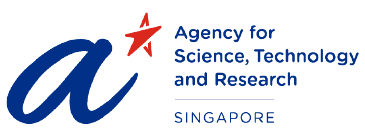Highlights
Prestigious College de France lectures hosted at CQT — course notes available
In February, CQT was privileged to host a lecture series by Serge Haroche, holder of the Chair in Quantum Physics in the College de France. Notes for the six-part course "Quantum information with real or artificial atoms and photons in cavities" are now available to download via the links below.
The College de France is a prestigious organisation founded in 1530 with the motto Docet omnia — the mission to teach everything. The holders of its 56 chairs are committed to teaching courses that are “an original contribution to knowledge or thinking” and open to all.
Serge Haroche, who has made many important contributions in quantum optics and quantum information science, also heads a research group at Laboratoire Kastler Brossel at the Ecole Normale Supérieure in Paris, France. CQT's Berge Englert invited him to deliver one of his College de France courses in Singapore in 2012. CQT is grateful to the College de France for approving and supporting the proposal.
Details of the series are provided below. Clicking the lecture title will download a pdf file of the lecture slides. The lecture series was included in the NUS graduate course "QT5201E Special Topics in Quantum Information: Advanced Quantum Optics".
Quantum information with real or artificial atoms and photons in cavities
CQT Lecture Series by Serge Haroche, College de France and Ecole Normale Superieure, Paris, France
Lectures delivered 6-17 February 2012 at the Centre for Quantum Technologies, National University of Singapore
Abstract: Manipulating states of simple quantum systems has become an important field in quantum optics and in mesoscopic physics, in the context of quantum information science. Various methods for state preparation, reconstruction and control have been recently demonstrated. Two-level systems (qubits) and quantum harmonic oscillators play an important role in this physics. The qubits are information carriers and the oscillators act as memories or quantum bus linking the qubits together. Coupling qubits to oscillators is the domain of Cavity Quantum Electrodynamics (CQED) and Circuit Quantum Electrodynamics (Circuit-QED). In microwave CQED, the qubits are Rydberg atoms and the oscillator is a mode of a high Q cavity while in Circuit QED, Josephson junctions act as artificial atoms playing the role of qubits and the oscillator is a mode of an LC radiofrequency resonator. The goal of these lectures is to analyze various ways to synthesise non-classical states of qubits or quantum oscillators, to reconstruct these states and to protect them against decoherence using quantum feedback methods. Experiments demonstrating these procedures will be described, with examples from both CQED and Circuit-QED physics. These lectures will give us an opportunity to review basic concepts of measurement theory in quantum physics and their links with classical estimation theory.
6. Description of Circuit QED experiments synthesing arbitrary states of quantum oscillators.
Learn more
Related Stories
France-Singapore collaboration in quantum renewed February 06 2018 | |
 | Ceremony marks creation of International Associated Laboratory by CQT and French partners November 11 2011 |






